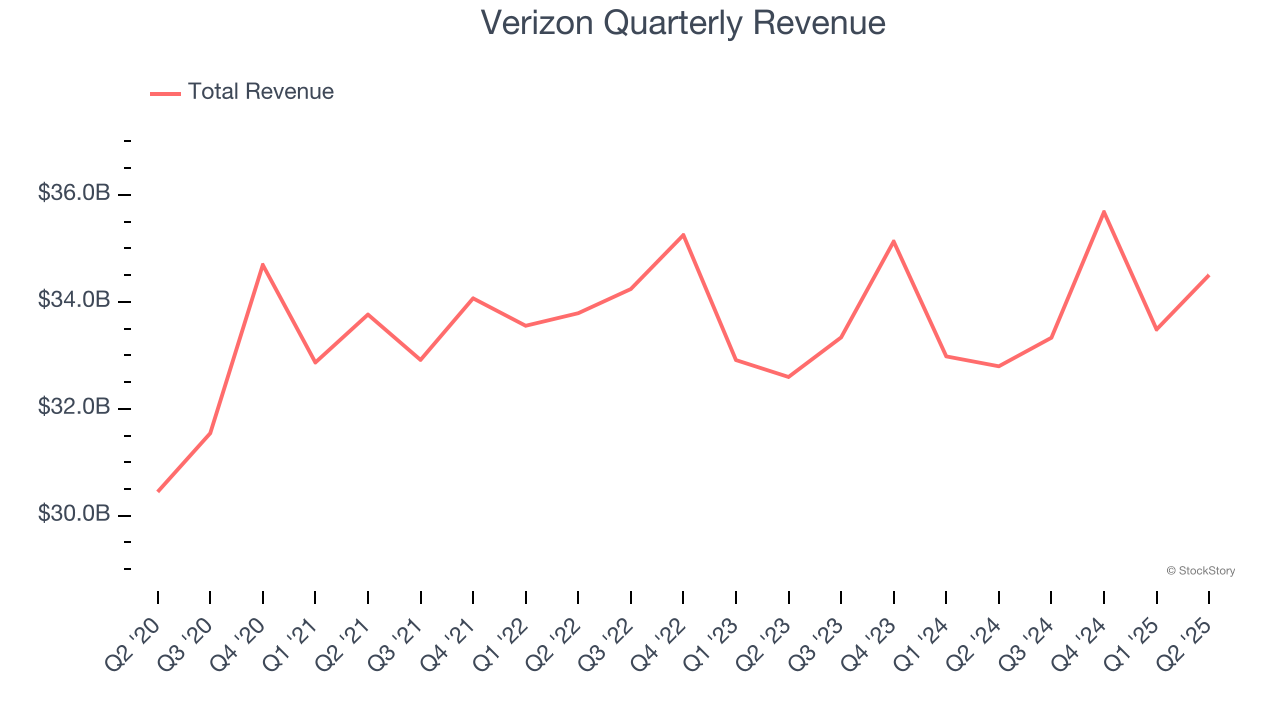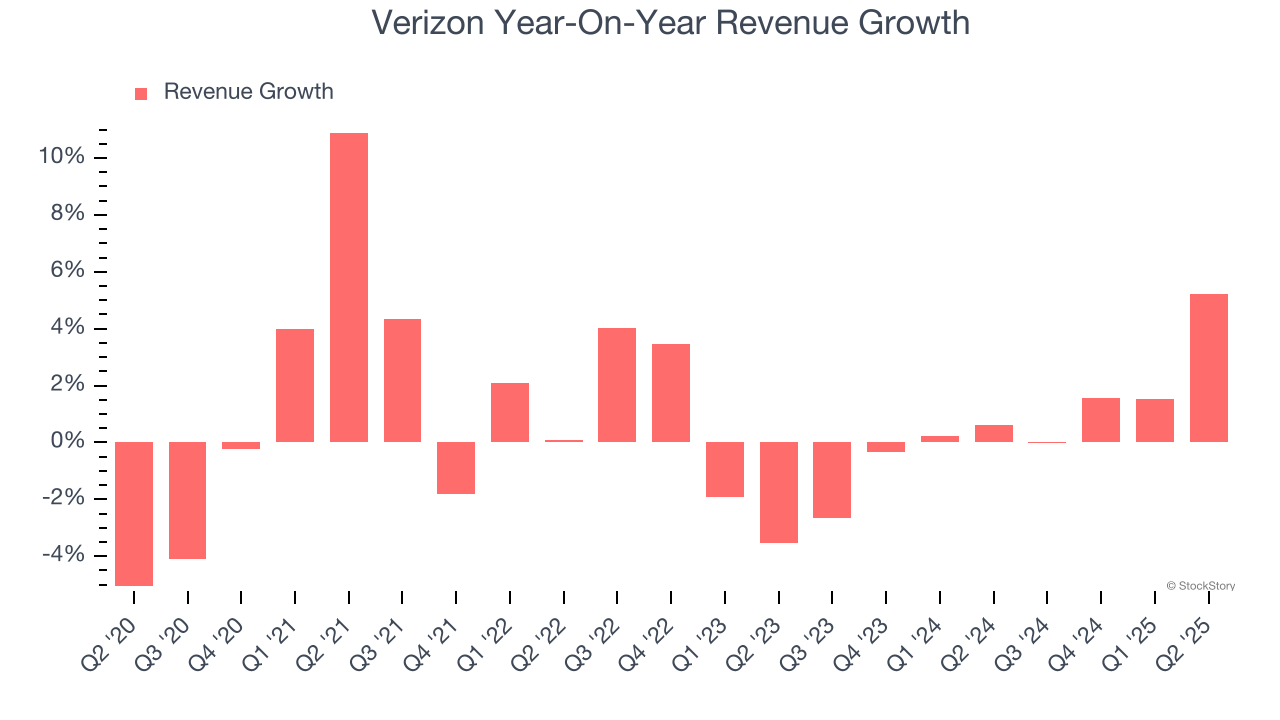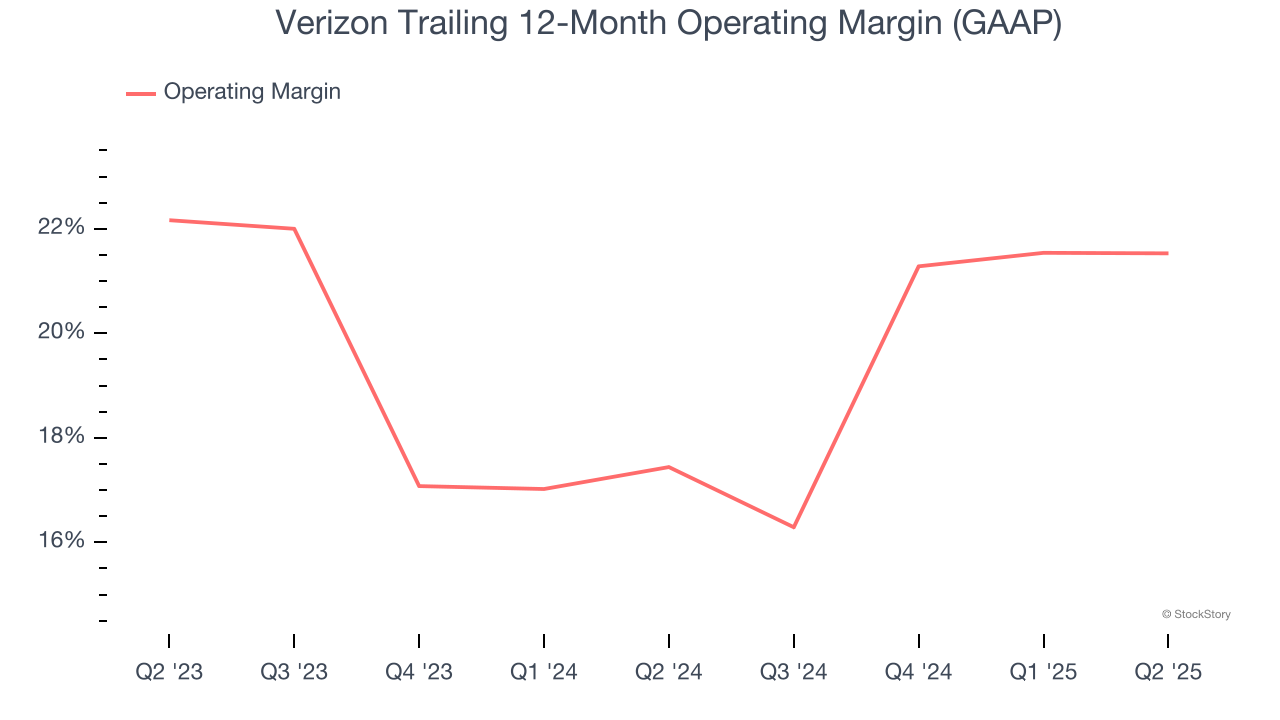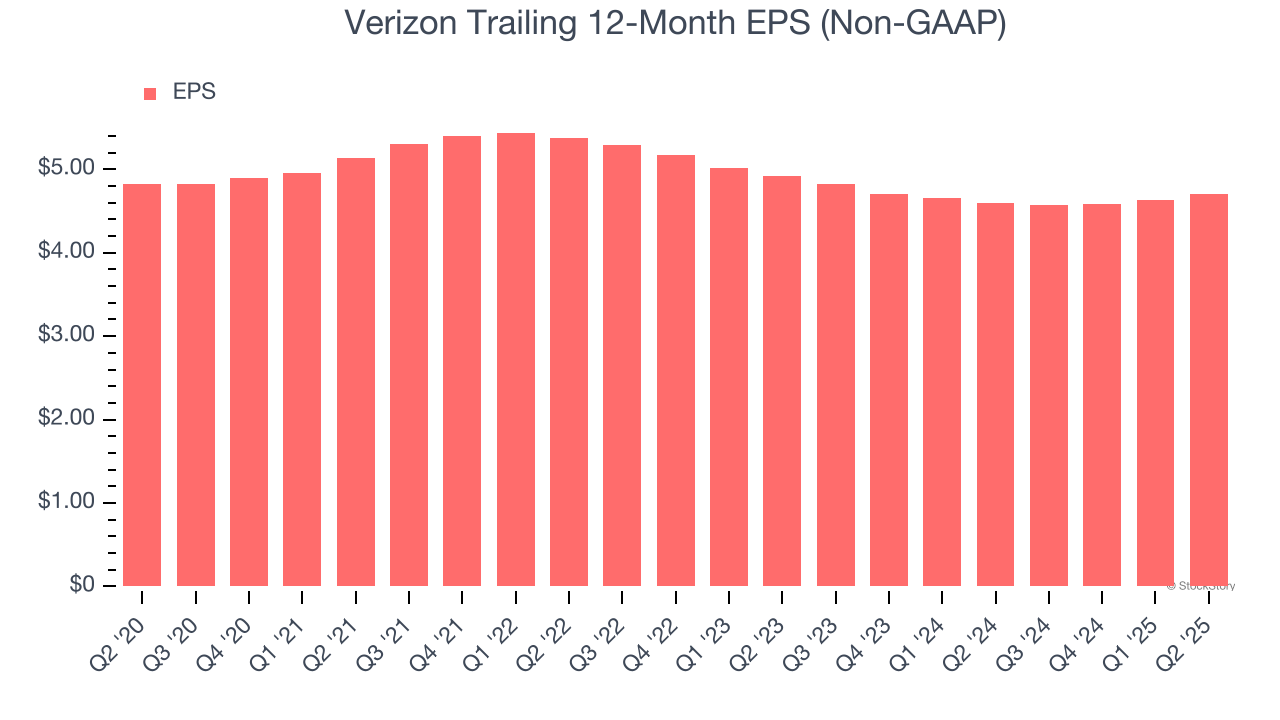
Telecommunications giant Verizon (NYSE:VZ) reported Q2 CY2025 results beating Wall Street’s revenue expectations, with sales up 5.2% year on year to $34.5 billion. Its non-GAAP profit of $1.22 per share was 2.6% above analysts’ consensus estimates.
Is now the time to buy Verizon? Find out by accessing our full research report, it’s free.
Verizon (VZ) Q2 CY2025 Highlights:
- Revenue: $34.5 billion vs analyst estimates of $33.72 billion (5.2% year-on-year growth, 2.3% beat)
- Adjusted EPS: $1.22 vs analyst estimates of $1.19 (2.6% beat)
- Adjusted EBITDA: $12.81 billion vs analyst estimates of $12.65 billion (37.1% margin, 1.3% beat)
- Full year guidance raised for Adjusted EBITDA growth, EPS growth, and free cash flow
- Operating Margin: 23.7%, in line with the same quarter last year
- Free Cash Flow Margin: 15%, down from 17.7% in the same quarter last year
- Market Capitalization: $172.2 billion
Company Overview
Formed in 1984 as Bell Atlantic after the breakup of Bell System into seven companies, Verizon (NYSE:VZ) is a telecom giant providing a range of communications and internet services.
Revenue Growth
A company’s long-term sales performance is one signal of its overall quality. Any business can have short-term success, but a top-tier one grows for years. Over the last five years, Verizon grew its sales at a weak 1.1% compounded annual growth rate. This fell short of our benchmarks and is a poor baseline for our analysis.

We at StockStory place the most emphasis on long-term growth, but within consumer discretionary, a stretched historical view may miss a company riding a successful new product or trend. Verizon’s recent performance shows its demand has slowed as its revenue was flat over the last two years. 
This quarter, Verizon reported year-on-year revenue growth of 5.2%, and its $34.5 billion of revenue exceeded Wall Street’s estimates by 2.3%.
Looking ahead, sell-side analysts expect revenue to grow 1.4% over the next 12 months, similar to its two-year rate. This projection doesn't excite us and implies its newer products and services will not accelerate its top-line performance yet.
Here at StockStory, we certainly understand the potential of thematic investing. Diverse winners from Microsoft (MSFT) to Alphabet (GOOG), Coca-Cola (KO) to Monster Beverage (MNST) could all have been identified as promising growth stories with a megatrend driving the growth. So, in that spirit, we’ve identified a relatively under-the-radar profitable growth stock benefiting from the rise of AI, available to you FREE via this link.
Operating Margin
Verizon’s operating margin has risen over the last 12 months and averaged 19.5% over the last two years. On top of that, its profitability was top-notch for a consumer discretionary business, showing it’s an well-run company with an efficient cost structure.

This quarter, Verizon generated an operating margin profit margin of 23.7%, in line with the same quarter last year. This indicates the company’s overall cost structure has been relatively stable.
Earnings Per Share
We track the long-term change in earnings per share (EPS) for the same reason as long-term revenue growth. Compared to revenue, however, EPS highlights whether a company’s growth is profitable.
Verizon’s flat EPS over the last five years was below its 1.1% annualized revenue growth. However, its operating margin didn’t change during this time, telling us that non-fundamental factors such as interest and taxes affected its ultimate earnings.

In Q2, Verizon reported EPS at $1.22, up from $1.15 in the same quarter last year. This print beat analysts’ estimates by 2.6%. Over the next 12 months, Wall Street expects Verizon’s full-year EPS of $4.70 to stay about the same.
Key Takeaways from Verizon’s Q2 Results
It was encouraging to see Verizon beat analysts’ revenue and free cash flow expectations this quarter. As a result, the company raised full-year guidance for adjusted EBITDA growth, EPS growth, and free cash flow. Overall, this print was quite encouraging. The stock traded up 4.7% to $42.72 immediately after reporting.
Should you buy the stock or not? We think that the latest quarter is only one piece of the longer-term business quality puzzle. Quality, when combined with valuation, can help determine if the stock is a buy. We cover that in our actionable full research report which you can read here, it’s free.
